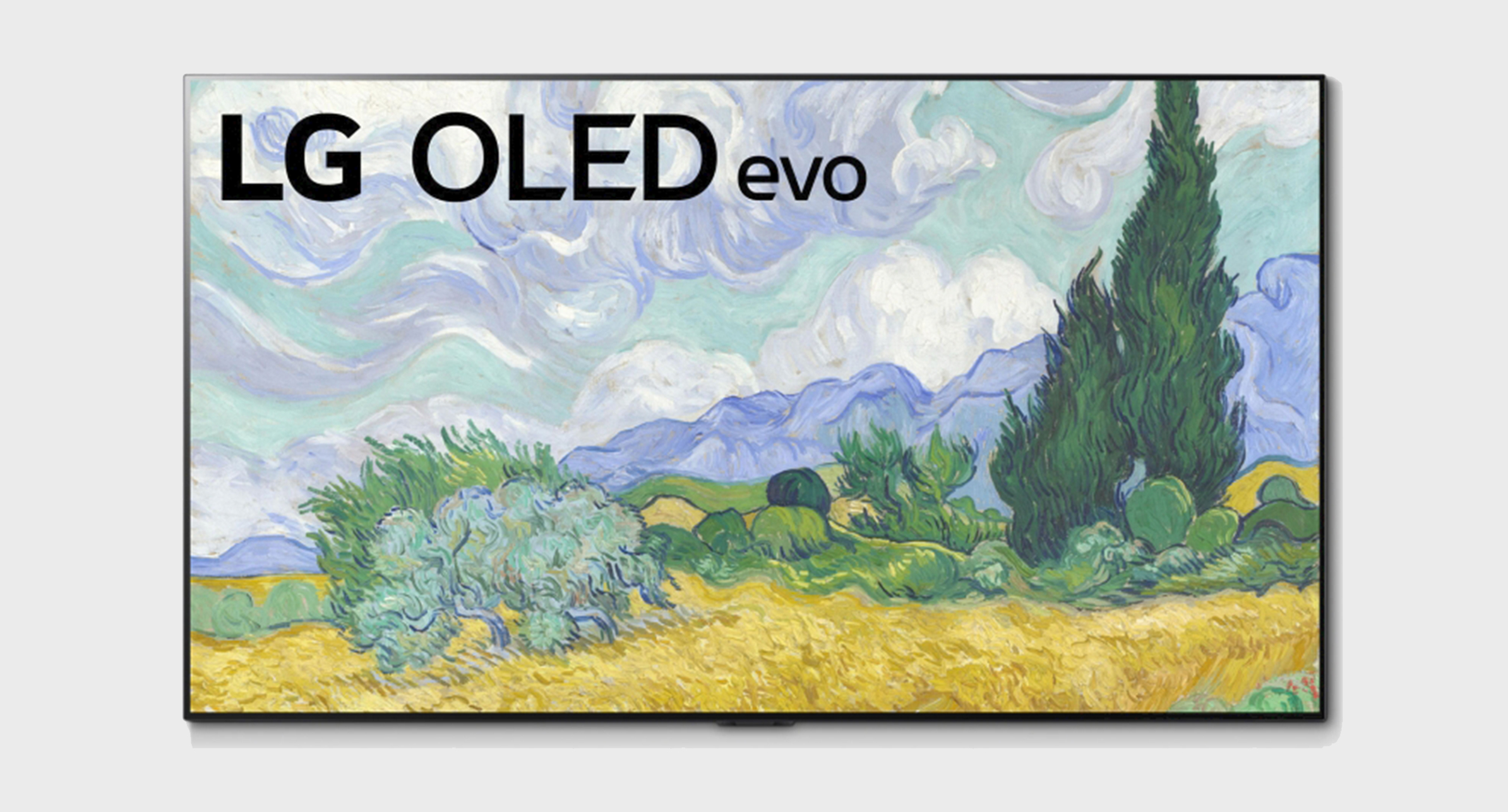LG OLED vs. OLED evo: Which TV should you buy?
How much better are LG OLED evo TVs? Here's what the tests say

One of this year’s most anticipated TV innovations, LG OLED evo promised a brighter image and better color range than existing OLED screens. And unlike the previous LG TV lineups, the new panel would be reserved for only the top-shelf LG G1 OLED TV.
That means the G1 (G for Gallery Series) should perform differently from the rest of the LG 2021 TVs. Last year, we lamented how the LG CX OLED TV and LG GX OLED TV shared similar picture quality despite the price difference.
- See the best LG TVs
- LG C1 OLED vs. CX OLED: Which TV should you buy?
Still, the company’s non-evo OLED panel made for some of the best TVs we’ve ever tested. LG biggest obstacle in advancing its screen technology is its existing success. So how do standard LG OLED vs. OLED evo truly compare? This face-off looks at all key factors, including our Tom’s Guide TV testing results and anecdotal viewing experience.
LG OLED vs. OLED evo: Price and sizes
Surprisingly, OLED evo is more affordable than the previous LG OLED panel at the Gallery Series level. The 65-inch model we tested in our LG G1 OLED TV review costs $2,999 – $500 less than the 65-inch LG GX OLED did when it first came out. The 65-inch configuration of the G1 costs $2,999, while the smaller 55-inch model costs $2,199 and larger 77-inch size costs $4,499.
LG’s standard OLED panel is on the LG C1 OLED TV. We haven’t reviewed the CX replacement yet, but we know the screen sizes and price. As you’d expect, it’s less expensive than the G1 with OLED evo, starting at $1,499 for a 48-inch model. The 55-inch configuration costs $1,799, while the 65-inch model costs $2,499 and the 77-inch version costs $3,799. There’s even a 83-inch model ($5,999), making the non-evo panel available in a larger size option than OLED evo. Big screens are hot in demand right now.
| Row 0 - Cell 0 | LG C1 OLED TV | LG G1 OLED evo TV |
| 48-inch | $1,499 | N/A |
| 55-inch | $1,799 | $2,199 |
| 65-inch | $2,499 | $2,999 |
| 77-inch | $3,799 | $4,499 |
| 83-inch | $5,999 | N/A |
While you can find last year’s LG TVs on sale right now with some of the best cheap TV deals, the G1 and C1 won’t see discounts until we approach the holiday season.
LG OLED vs. OLED evo: Display
OLED evo is technically LG’s second-generation OLED panel. Although the standard LG OLED hasn’t changed much since the introduction of HDR in 2015, it’s still considered the one of best panels the consumer TV industry offers.
Any given TV pixel consists of red, blue and green colors, which combine to create the millions of colors needed for a picture. In OLED, these pixels also provide the picture’s light. According to LG, each of the self-emissive pixels in OLED evo produces more light per pixel than before. It also claims a better red and blue brightness and an added green element.
While maintaining the high-contrast clarity of current OLED panels, LG OLED evo introduces a new luminous element that looks to improve the overall brightness and color range. OLED already excelled in picture contrast, but LCD screens have had it beat in brightness, making the latter technology a better choice for daytime viewing in naturally-lit rooms.
LG OLED vs. OLED evo: Test results
But do these alleged improvements actually make a difference? In our series of proprietary TV tests, the LG G1 OLED TV with OLED evo didn’t show as significant improvements as we’d expected. The scores were among the best we’ve ever gathered, but compared to last year’s LG GX OLED TV, evo didn’t prove evo-lutionary. Instead, it looked more like an incremental improvement.
In terms of color accuracy, OLED evo earned a Delta-E score of 1.64. Any result of 2.0 or lower is good with the lower scores being better. It’s a very slight improvement over the GX (1.73).
There’s no improvement at all in evo’s coverage of the color gamut compared to regular LG OLED. The G1 produced 133.92 percent of the Rec 709 color space (which exceeds the basic color standard by a significant margin) but the LG GX’s score was superior, producing 134.42 percent.
OLED evo finds some redemption in the tested brightness. The LG G1 OLED reached a max brightness of 412.05 nits, which isn’t all that much better than the GX (388.88) but makes evo one of the brightest OLED panels to ever face the Tom’s Guide TV tests.

LG OLED vs. OLED evo: Performance
We tested the LG GX and LG G1 just a few weeks apart, so with the anecdotal viewing experience of last year’s set fresh in our minds, we could recognize the visual differences between last year's panel and this year’s OLED evo display.
We had concerns over how the LG OLED’s brightness would hold up in rooms lit by window light. From what we experienced in anecdotal viewing, the evo panel alleviated our worries. We watched the war movie Greyhound, which is filled with ominous, low-light scenes out in the Atlantic Ocean. The result is lots of little variations of black hues. The GX struggled with those subtle differences, specifically in textures, but the G1 handled the crisp details of Tom Hanks' captain uniform and the crashing waters masterfully.
Both evo’s advancements to brightness and color range likely contributed to the visible improvements we saw. There wasn’t much room for improvement in motion handling and color accuracy, but the G1 maintained the picture prowess we witnessed on the GX.
LG OLED vs. OLED evo: How much better is evo?
The quantitative differences of LG OLED vs. OLED evo prove LG innovated its OLED panel this year. But the innovations aren’t as extreme as we expected. It feels like a smidge better than an average annual refresh. This might be disappointing for people who review dozens of sets each year, but is no small feat for how far TV technology has come.
Next-gen OLED is a good sign for the direction TV screens are going. Not only is it more affordable, but it addresses one of OLED”s biggest challenges: brightness. There are brighter TVs, sure, but you’d have to shop LCD instead.
We still need to check out the LG C1 OLED with standard LG OLED to see how it stands up to G1 with OLED evo. We’ll update this story when the test results are in.
Which TV should you buy? See how our favorite TVs stack up in our collection of TV face offs:
Sign up to get the BEST of Tom's Guide direct to your inbox.
Get instant access to breaking news, the hottest reviews, great deals and helpful tips.
Kate Kozuch is the managing editor of social and video at Tom’s Guide. She writes about smartwatches, TVs, audio devices, and some cooking appliances, too. Kate appears on Fox News to talk tech trends and runs the Tom's Guide TikTok account, which you should be following if you don't already. When she’s not filming tech videos, you can find her taking up a new sport, mastering the NYT Crossword or channeling her inner celebrity chef.

